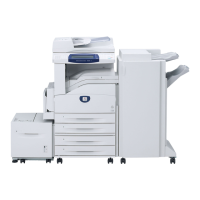128
6 Changing the Machine Settings
[Proxy Server Setup]
Configure the specification of the proxy server. If [Different Proxy for Each Protocol] is configured, an HTTPS proxy
server and HTTP proxy server can be configured individually.
If [Same Proxy for All Protocols] is configured, the HTTPS proxy server settings are applied to the HTTP proxy server.
[HTTPS Proxy Server Name]
Enter the server name or IP address of the HTTPS proxy server. This setting can be specified by IPv4 address, IPv6
address, and FQDN format.
[HTTPS Proxy Server Port Number]
Configure the port number of the HTTPS proxy server.
Note
Do not use a number that is being used by another port.
[HTTPS Proxy Server Authentication]
Configure to [Enabled] when authentication is necessary when connecting to an HTTPS proxy server.
[HTTPS Proxy Server Login Name]
Enter the login name of the HTTPS proxy server.
[HTTPS Proxy Server Password]
Enter the password of the HTTPS proxy server.
[HTTP Proxy Server Name]
Enter the server name or IP address of the HTTP proxy server. This setting can be specified by IPv4 address, IPv6
address, and FQDN format.
[HTTP Proxy Server Port Number]
Configure the port number of the HTTP proxy server.
Do not use a number that is being used by another port.
[HTTP Proxy Server Authentication]
Configure to [Enabled] when authentication is necessary when connecting to an HTTP proxy server.
[HTTP Proxy Server Login Name]
Enter the login name of the HTTP proxy server.
[HTTP Proxy Server Password]
Enter the password of the HTTP proxy server.
[Outgoing / Incoming Email Settings]
[POP3 Server Settings]
[Server Name / IP Address]
Enter the server name or IP address of the POP3 proxy server.
[Port Number]
Configure the port number of the POP3 server.
